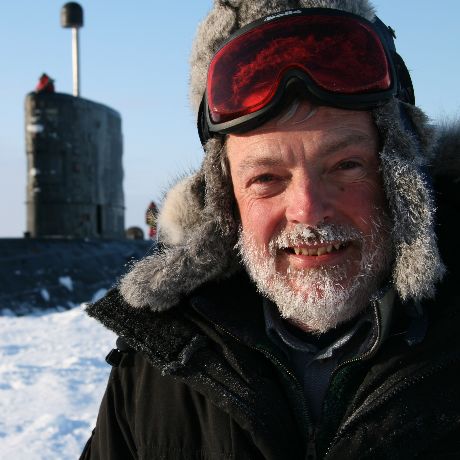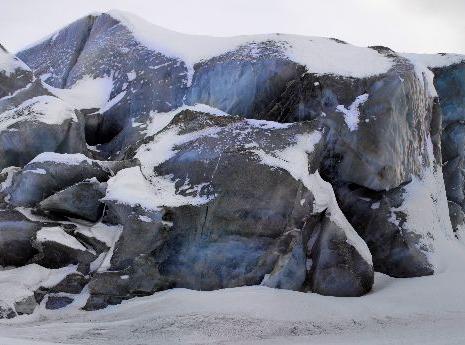Wave-ice interaction and the marginal ice zone (MIZ-WAVE)
The remarkable scale of summer retreat of sea ice observed in the Beaufort-Chukchi sector of the western Arctic Ocean has resulted in the creation of a genuine seasonal marginal ice zone (MIZ), which is subject to substantial wave energy effects because of the large wind fetches now available.
The dynamics of the MIZ can in large part be attributed to wave action breaking up ice into floes and subsequent free drifting of these floes out of the polar front, where they then melt, or being caught up in eddies. Waves will clearly have a dominant role in both the freeze-up and break-up of ice in the newly near seasonal Arctic Basin.
Recent work has suggested that the mechanical break-up of sea ice by waves, tides and large-scale dynamic events was heavily implicated in the dramatic loss of Arctic sea ice in the summer of 2007 (Perovich et al, 2008) and will be an increasingly important process in the future. As well as the clear effects on ice growth and retreat, this new wave/ice regime will also have significant impact on offshore structures, shipping and fishing activities in the region, as well as the use of the near shore environment by indigenous peoples.
MIZ-WAVE
The remarkable scale of summer retreat of sea ice observed in the Beaufort-Chukchi sector of the western Arctic Ocean has resulted in the creation of a genuine seasonal marginal ice zone (MIZ).
Barrow, Alaska
View our interactive mapThe position of the ice edge is therefore determined by dynamic and mechanical processes but current models do not describe very effectively. This could be one reason why the large-scale models used by the Intergovernmental Panel on Climate Change (IPCC) have been unable to track the observed large retreats in seasonal ice extent (Wang and Overland, 2009).
The advent of global position systems (GPS) and rapid, reliable data transmission from observation platforms to satellites now permits longer time series to be obtained more reliably than previous install-and-remove in situ experiments, and allows a much fuller description of the role of waves in MIZ processes, with special reference to the Beaufort Sea and the 'modern era' ice cover. Such experiments will be specifically designed to satisfy the needs of modellers who are heavily involved with the wave-ice problem and can then feed their outputs into improved regional models.
This project is an international activity and will include access to Arctic Ocean cruises by the Norsk Polarinstitutt vessel “R.V. Lance” in Fram Strait and the joint US/Canadian programme "Late summer state of the sea ice pack in the Beaufort and Chukchi Seas" (PI Andrey Proshutinsky), which is taking the icebreaker “CCGS Louis St Laurent” into the Beaufort Sea region in autumn 2012-2014.
Image credits: British Antarctic Survey.

Professor Peter Wadhams, Lead Investigator
Peter Wadhams is Professor of Ocean Physics, and Head of the Polar Ocean Physics Group in the Department of Applied Mathematics and Theoretical Physics at the University of Cambridge.
He and Dr Jeremy Wilkinson are both partners in the US Office of Naval Research Program “Emerging Dynamics of the Marginal Ice Zone”, focussing on the Beaufort Sea.
Peter is acknowledged internationally as a leading expert on sea ice and polar oceanography and his collaboration with the Royal Navy gave early access to the use of submarines to gather invaluable data on the rapid thinning of Arctic sea-ice. His doctoral thesis “The effect of a sea ice cover on ocean surface waves” was based at Scott Polar Research institute in Cambridge and he then undertook post-doctoral research at the Institute of Ocean Sciences, Victoria, B.C., Canada, working on sea ice structure and dynamics in the Beaufort Sea and the impact of oil spills, an interest he has maintained throughout his career. He returned to SPRI in 1976 and was Director of SPRI from 1987-1992.
He has participated in over 45 research cruises to both polar regions, held visiting professorships in various countries and coordinated and contributed to major EU funded polar research projects. He is a member of the Scientific Committee of the European Environment Agency.
View other team members




